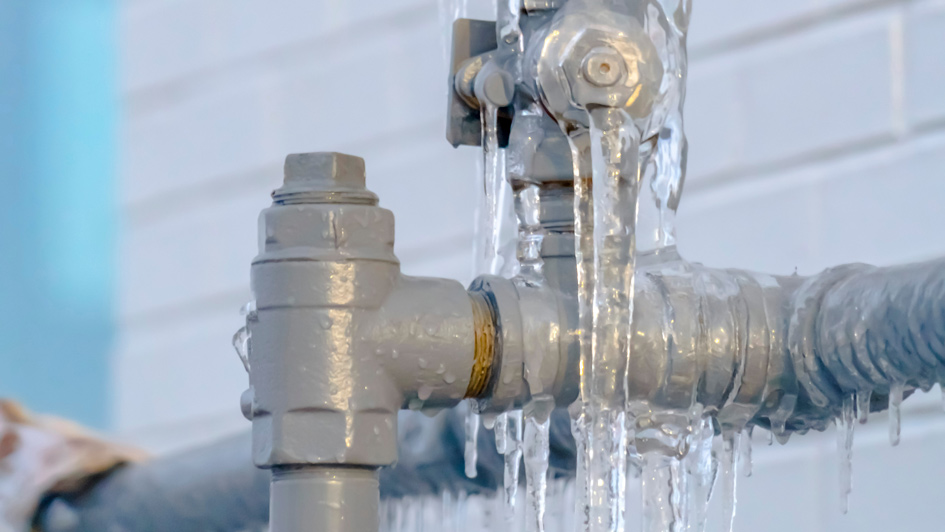
Lots of snow and winter weather presents a great opportunity for a fun day sledding down a nearby hill or snowball fights in the neighbor's yard. However, winter weather can be tough on your home. Extremely cold conditions can encourage the water lines in your home to freeze and burst, which may result in significant water damage and enduring negative effects.
When your pipes are covered in ice, you might need to contact a plumber in Los Angeles to handle the problem. Nevertheless, there’s multiple things you can perform on your own to stop this from happening – and even just a bit of prevention can go a long way.
What Pipes Are at More Risk of Freezing
The pipes at the greatest risk of freezing are uncovered water lines. Frequent locations for exposed pipes are inside attic crawlspaces, near exterior walls, in the basement or even running underneath a modular home. Water lines that are not appropriately insulated are at the biggest risk.
How to Prevent Pipes from Freezing Over in Your Home
Sufficiently insulating exposed water lines is a solid first step to keeping your pipes ice free. You’ll generally have access to many of these materials from the local plumbing company, and could also already have some inside your home.
Be mindful not to wrap up other flammable insulation materials where they might light on fire. If you don’t feel comfortable insulating the pipes by yourself, get in touch with your local plumbing services professional in Los Angeles to handle the job.
If you do decide to insulate the pipes yourself, common insulation materials for pipes include:
- Wraps or roll insulation: Multiple plumbers, hardware stores and big box retailers sell insulation – commonly fiberglass, foam wraps or pipe sleeves – that you can use to wrap or fit around your pipes. They are supplied in various lengths and sizes to suit the needs of your home.
- Newspaper: In a pinch, newspaper can be used as insulation. If the weather is cooling down and you aren’t able to add insulation in time, try wrapping uninsulated pipes in this.
- Towels or rags: If you aren’t able to add insulation and don’t have any newspaper to use, wrapping particularly vulnerable pipes with towels or clean rags as a last-ditch effort could be just enough to keep the cold air away from the pipes.
One other preventative step you can attempt to keep pipes from being covered in ice is to seal any cracks that may let cold air inside your home. Keep an eye on the window frames, which can draw in surprisingly intense drafts. Not only should this help to prevent your pipes from freezing, but it will have the added benefit of making your home more energy efficient.
Five More Ways to Keep Your Pipes from Freezing:
- Open the cabinet doors. Opening the cabinet doors under the sinks and other spaces of your home that have pipes will permit more warm air from the rest of the room to flow near the pipes.
- Letting water drip. Keeping the water flowing by letting your faucets drip even just a bit can help thwart frozen pipes.
- Open interior doors. By opening doors for rooms or hallways, your home can be heated more consistently. This is particularly important if there's a room that is frequently colder or hotter than the rest of the home.
- Close the garage door. The exception to the open doors recommendation is the garage door, which you should keep closed – especially if your water lines run through the garage.
- Keep the heat steady. Experts suggest setting the thermostat at a constant temperature and leaving it alone, rather than allowing it to get lower at night. Set it no lower than 55 degrees.
How to Stop Pipes from Freezing in a Vacant Home
When you’re at home, it’s easier to realize when something goes wrong. But what additional steps can you try to stop pipes from freezing in an empty home or vacation home when the damages from a frozen pipe might not be discovered for days or even weeks?
As with the main residence, insulating any exposed water lines, opening interior doors inside the home and winterizing the vacant home are the best steps to try at first.
Added Steps to Keep Pipes from Freezing in an Unused Home:
- Leave the heat on. Even though you won't always be home, it’s best to leave the heat on – even if you switch the thermostat down lower than you would if you were there. As with a primary residence, experts encourage keeping the temperature at no lower than 55 degrees.
- Shut water off and drain the lines. If you’re going to be away for an extended period of time or are winterizing a vacation cabin or cottage, switching the water off to the house and clearing the water out of the water lines is a good way to stop pipes from freezing and breaking. Don’t forget to flush the water out of your appliances, such as the hot water heater, as well as the toilets. See to it that you empty all the water from the pipes. If you’re unsure of how to flush the water from the pipes, or don’t feel secure handling it on your own, a plumber in Los Angeles will be happy to step in.
